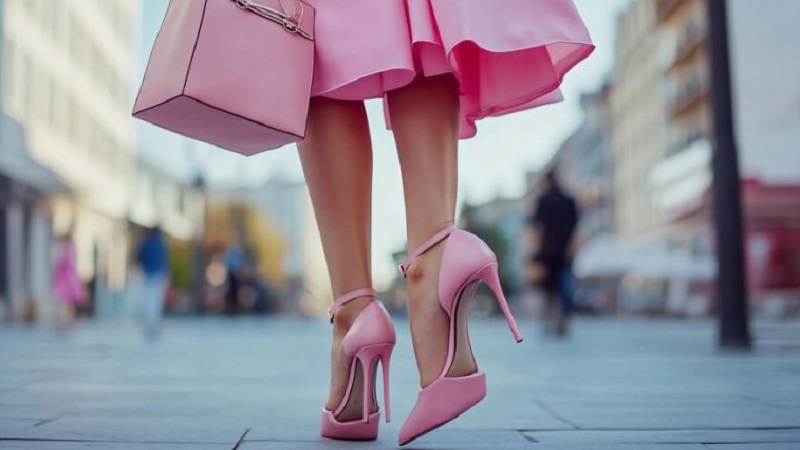High heels are a fashion staple for many women, but they can become uncomfortable during long events. Choosing the right pair and employing various strategies can make a significant difference in comfort levels. The key to staying comfortable in high heels during extended periods is to select shoes with a gradual slope and adequate support.
Opting for comfy heels with features like cushioned insoles and sturdy heels can provide better stability and reduce foot fatigue. Additionally, preparing your feet before the event and taking care of them during and after can help minimize discomfort. This includes stretching your feet, using gel inserts, and giving your feet breaks when possible.
By combining the right shoe selection with proper foot care techniques, you can confidently wear high heels for extended periods without sacrificing comfort or style. With these strategies in place, you’ll be ready to tackle any long event while looking fabulous in your favorite heels.
Key Takeaways
- Choose heels with a gradual slope and supportive features for enhanced comfort
- Prepare feet before events and use cushioning inserts to reduce discomfort
- Take regular breaks and practice proper foot care to maintain comfort in high heels
Selecting the Right Pair
Choosing the perfect pair of high heels is crucial for comfort during long events. The right heel height, shape, and materials can make a significant difference in how your feet feel after hours of wear.
Understanding Heel Height and Shape
Heel height plays a key role in comfort. Lower heels (2-3 inches) generally offer more stability and less strain on the feet. For those who prefer taller heels, platform styles can provide additional support by reducing the angle of the foot.
Chunkier heels distribute weight more evenly, offering better balance and less pressure on the ball of the foot. Wedges are another excellent option, providing a larger surface area for weight distribution.
The shape of the toe box is equally important. A rounded or almond-shaped toe allows more room for the toes, reducing discomfort and the risk of blisters.
Choosing Shoes for Wide Feet and Comfort
Wide feet require special consideration when selecting high heels. Opt for styles with a wider toe box to prevent cramping and pinching. Many brands now offer wide-width options in their heel collections.
Look for shoes with adjustable straps or buckles. These allow for a customized fit and can accommodate slight swelling that may occur during long events.
Consider shoes with built-in cushioning or the ability to add insoles. This extra padding can significantly enhance comfort, especially in the ball of the foot and heel areas.
The Importance of Quality Materials
High-quality materials are essential for comfortable heels. Leather is an excellent choice as it molds to the shape of your foot over time, providing a custom fit.
Breathable materials help prevent excessive sweating and reduce the risk of blisters. Look for shoes with leather lining or moisture-wicking fabrics.
The sole of the shoe should offer flexibility and cushioning. A rubber sole can provide better traction and shock absorption compared to a hard plastic or wooden sole.
Pay attention to the construction of the shoe. Well-made heels with reinforced stitching and sturdy heel caps tend to be more comfortable and last longer.
Enhancing Comfort and Preventing Pain
High heels can be more comfortable with the right techniques and products. Proper inserts, friction reduction, and correct posture all contribute to a pain-free experience.
Using Inserts and Cushioning
Gel inserts and cushioning insoles provide extra support for the feet. Place them strategically in the shoe’s pressure points. Ball-of-foot pads reduce strain on the forefoot area. Arch support inserts help distribute weight evenly.
Heel grips prevent slippage and blisters at the back of the foot. Choose adhesive grips that stay in place throughout the event. Cushioned heel cups absorb shock with each step.
For all-over comfort, consider full-length insoles. These offer support from heel to toe. Memory foam options mold to the foot’s shape over time.
Reducing Friction and Avoiding Blisters
Friction leads to painful blisters. Apply an anti-blister stick to high-friction areas before wearing heels. This creates a protective barrier on the skin.
Moleskin patches provide targeted protection. Cut them to fit problem spots like the back of the heel or sides of toes. Soft, padded moleskin prevents rubbing.
Deodorant applied to feet reduces moisture and friction. A thin layer on blister-prone areas can prevent irritation. Some opt for baby powder as an alternative.
Thick socks or tights create a buffer between skin and shoe. This extra layer minimizes direct contact and friction. Choose seamless options for the best results.
Heel Wearing Techniques and Posture
Proper walking technique in heels reduces strain. Take smaller steps and land on the outer edge of the heel first. Roll through to the ball of the foot with each step.
Engage the core muscles while walking. This improves balance and takes pressure off the feet. Stand tall with shoulders back and head up.
Alternating between sitting and standing improves circulation. When seated, flex and point the toes to keep blood flowing. This prevents swelling and discomfort.
Choose an appropriate heel height for the event duration. Lower heels or platforms distribute weight more evenly. Break in new shoes before wearing them to long events.
Conclusion
Staying comfortable in high heels during long events requires preparation and smart choices. Selecting the right shoes, using inserts or padding, and practicing proper walking techniques can significantly improve comfort. Taking breaks, stretching, and having backup flats are also key strategies. With these tips, it’s possible to confidently wear heels for extended periods while minimizing discomfort and potential foot issues.
